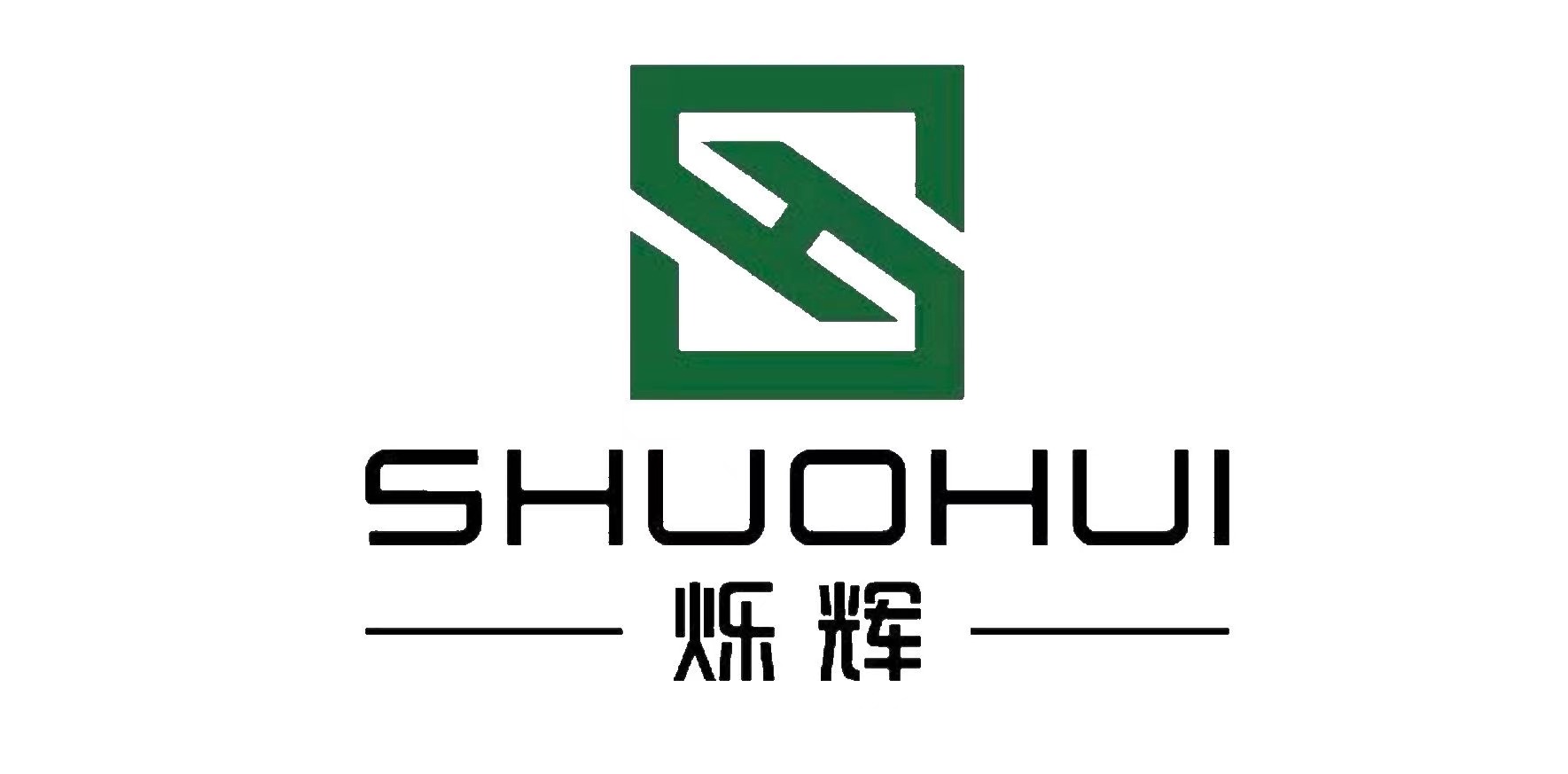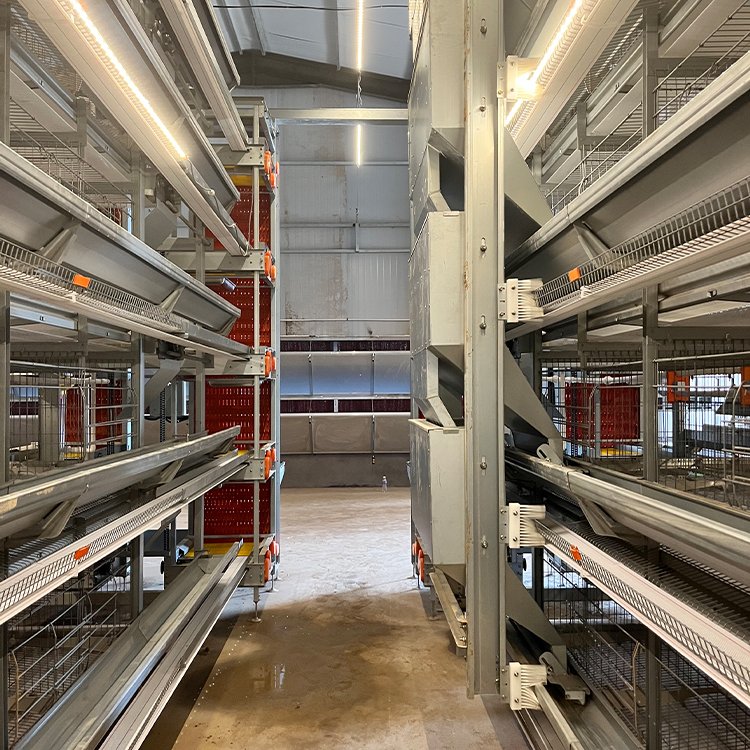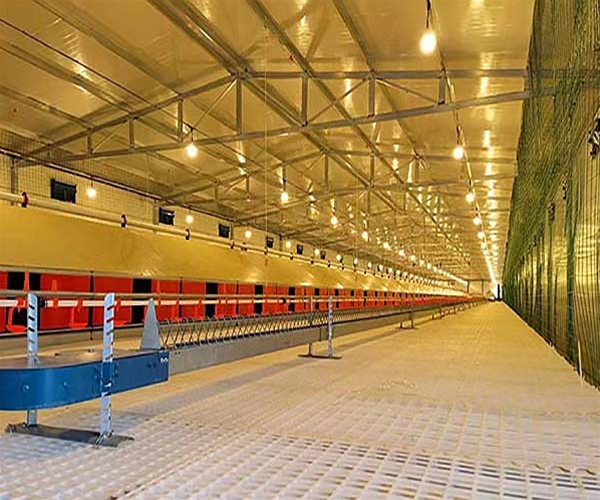As demand for sustainable agriculture grows, the poultry industry is facing increasing environmental and economic challenges. Sustainable chicken farming not only focuses on reducing the environmental footprint but also aims to improve production efficiency, enhance animal welfare, and ensure long-term profitability. Automation technology can help farmers reduce labor costs while increasing output. This article explores how adopting sustainable practices, including automation systems, can enhance the efficiency, environmental friendliness, and profitability of poultry farming.
1. What is Sustainable Chicken Farming?
Sustainable chicken farming focuses on raising chickens in ways that minimize environmental impact, improve animal welfare, and increase farm profitability. These practices include efficient feed management, waste recycling, water conservation, and ensuring a healthy environment for the chickens.
2. Key Principles of Sustainable Chicken Farming
To build a sustainable poultry farm, farmers need to focus on several key aspects:
- Efficient Feed Management: Feed costs are the largest expenditure in poultry farming. Sustainable farms use high-nutrient feed and ensure it is delivered efficiently using automated systems, reducing waste.
- Waste Reduction and Recycling: Waste management is crucial. Chicken manure, uneaten feed, and other organic waste can be converted into organic fertilizer or used for biogas production, reducing pollution and promoting resource recycling.
- Water Conservation: Efficient water management is essential. Automated drinking systems ensure chickens have access to clean water while minimizing waste.
- Energy Efficiency: Using energy-efficient equipment like lighting, ventilation, and climate control systems reduces energy consumption while maintaining optimal conditions for poultry health.
3. How Automation Supports Sustainable Chicken Farming
Automation is key to achieving sustainable chicken farming. By integrating automated systems, farms can reduce labor needs, increase efficiency, and implement practices that reduce resource waste. Here are several ways automation contributes to sustainability:
a) Automated Feeding Systems
Automated feeding systems ensure that chickens receive the right amount of feed at the right time. These systems use conveyors, pipes, or automated troughs to deliver feed directly to the chickens, reducing waste and increasing production efficiency.
b) Automatic Manure Removal Systems
Maintaining cleanliness in the chicken house is vital for preventing disease. Automatic manure removal systems efficiently remove waste at regular intervals, keeping the area clean and dry. This reduces manual labor and helps maintain optimal conditions for the chickens.
c) Water Management Systems
Automated drinking systems ensure chickens always have access to fresh, clean water. These systems reduce water waste and help maintain a consistent water supply, supporting optimal hydration for healthy chickens.
d) Environmental Control Systems
Environmental control systems monitor and adjust the temperature, humidity, and ventilation in the chicken house to create the ideal living conditions for the chickens. These systems adjust automatically to external weather changes, ensuring the chickens remain in an optimal environment for egg production.
e) Automatic Egg Collection Systems
Manual egg collection can be time-consuming and labor-intensive. Automatic egg collection systems gather eggs from nesting areas and transport them to a central point using conveyor belts or rollers. This system increases efficiency and minimizes egg breakage, resulting in higher-quality eggs.
4. Benefits of Sustainable Chicken Farming
Adopting sustainable practices helps improve farm efficiency, lower costs, and reduce environmental impact. Here are the benefits of automation in sustainable chicken farming:
- Improved Efficiency: Automation ensures that resources such as feed, water, and energy are used efficiently, reducing waste and improving productivity.
- Lower Operational Costs: Automation reduces the need for manual labor, lowering labor costs and energy consumption, which in turn reduces overall operating expenses.
- Better Animal Welfare: Automation provides chickens with the ideal living conditions, improving their health and productivity.
- Environmental Sustainability: Automation helps reduce waste and optimize the use of water and energy, lowering the farm’s environmental footprint.
- Increased Profitability: By improving efficiency and reducing costs, sustainable chicken farming increases farm profitability and market competitiveness.
5. Future Outlook for Sustainable Chicken Farming
As technologies like artificial intelligence, the Internet of Things (IoT), and robotics continue to evolve, automated chicken farming systems will become even more intelligent. In the future, farming systems may achieve higher levels of self-learning and adaptation, autonomously adjusting methods based on changes in the environment or the health of the chickens. At the same time, the focus on green, environmentally-friendly practices will continue to integrate into farming, driving the industry toward a more sustainable and intelligent future.
Overall, technological advancements and trends in sustainable chicken farming will push the industry toward higher efficiency, environmental sustainability, and intelligence. As automation technology matures, the future of poultry farming will no longer rely on traditional labor-intensive methods but will evolve into a highly efficient, precise, and environmentally sustainable agricultural system.
Conclusion
Sustainable chicken farming is crucial for the future of the poultry industry, and automation plays a key role in achieving this goal. By adopting automated equipment, farms can improve production efficiency, reduce costs, and enhance animal welfare, while minimizing environmental impact. As technology continues to progress, automated chicken farming will become even more efficient, eco-friendly, and profitable.
If you want to improve the sustainability and profitability of your poultry farm, investing in automation is the way to go. By combining sustainable practices with automation technology, you can build a highly efficient, eco-friendly modern poultry farm.


